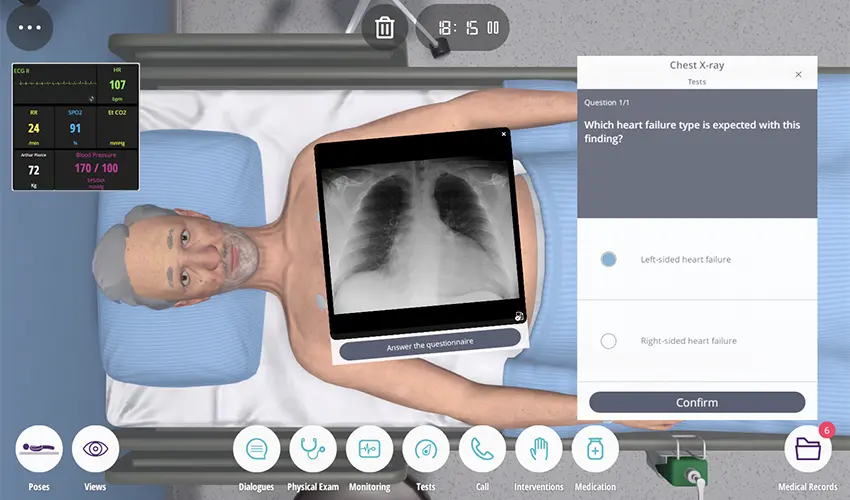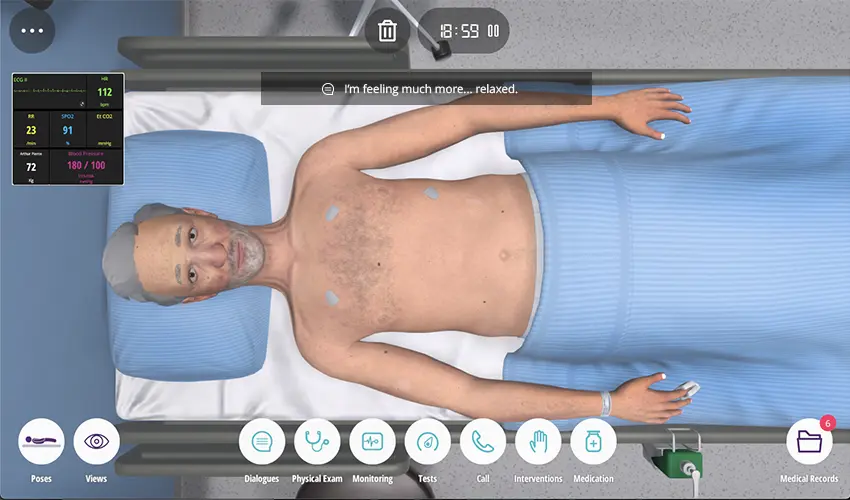Getting Ready for the NCLEX through Virtual Patients
The Next Generation NCLEX® (NGN) was launched in April 2023, which means new item types, cascading questions, and a greater emphasis on critical thinking and clinical decision-making.
One fundamental transformation in nursing education and practice is the transition from the traditional nursing process to a more comprehensive concept known as clinical judgment.
In this introduction to the new NCLEX® version, which emphasizes clinical judgment, nursing educators and students must adapt to this new approach to ensure safe and effective patient care.
Understanding the Nursing Process
Despite the long-standing use of the nursing process, the National Council of State Boards of Nursing, or the NCSBN, points to the expectation for new nurses to utilize clinical judgment, which is a concept that encompasses both critical thinking and decision-making skills. Clinical judgment Model is considered as a framework for the valid measurement of clinical judgment and decision-making in the context of a standardized, high-stakes examination. Therefore NCJMM doesn’t replace existing nursing process models but offers a method for measuring clinical judgment and decision-making skills.
Indeed, the importance of assessing clinical judgment has driven the development of the next NCLEX, highlighting the need for a reliable measure of this concept.
The Role of Virtual Patients through Body Interact
Body Interact is a state-of-the-art virtual patient simulation platform that provides a realistic and immersive learning experience for nursing students. It offers a range of patient scenarios, each designed to challenge students’ clinical judgment skills. Here’s how Body Interact aligns with the components of the clinical judgment model:
Recognize Cues: Body Interact presents lifelike patient scenarios with a wide array of physical and physiological cues. Students must observe and recognize these cues to identify potential health issues accurately.
Analyze Cues: The platform allows students to interact with virtual patients, assess vital signs, and review patient histories. This encourages critical thinking and data analysis as students interpret the information provided.

Prioritize Hypotheses: Within Body Interact, students must prioritize potential diagnoses and interventions based on the information they gather from the virtual patient. This step reinforces the importance of prioritizing patient needs.
Generate Solutions: Nursing students are tasked with developing and implementing care plans for virtual patients. They must consider various treatment options and interventions, fostering creative problem-solving skills.
Take Action: In Body Interact, students make real-time decisions about patient care, including administering medications, performing procedures, and providing emotional support. These actions directly impact patient outcomes.

Evaluate Outcomes: By comparing actual outcomes with expected outcomes, students are able to evaluate the effectiveness of their interventions and improve their clinical judgment skills.
The transition from the nursing process to a model emphasizing clinical judgment is an essential step in nursing education. It equips students with the skills needed to excel in the evolving healthcare landscape and succeed in NGN exams.
Incorporating innovative tools like Body Interact into nursing education can enhance the development of clinical judgment skills, providing students with a realistic and immersive learning experience. By embracing technology and aligning it with the clinical judgment model, nursing educators can prepare their students to provide safe, effective, and patient-centered care, ultimately advancing the quality of nursing practice.
By Ana Santa – MSN, APRN








